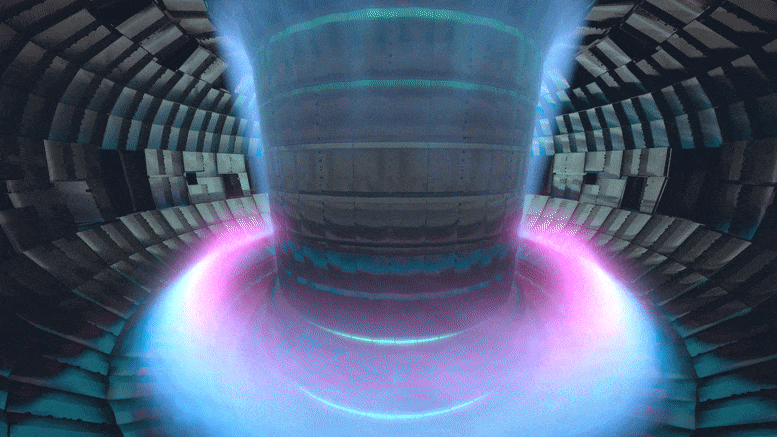Clean Energy Potential: Fusion reactor sees net energy gain for second time, pace of development advances
The way stars generate energy might hold the key to our future energy generation and help in the battle against climate chaos!
Fusion, the means by which stars such as our sun, create energy has long been a target of scientific research. This method makes energy by the fusing together of atoms, as opposed to nuclear power, which comes from the splitting of atoms. Done right, fusion offers the hope of vast amounts of clean, renewable energy and could rapidly move humanity away from fossil fuels.
The catch is, that while we’ve understood for some time the theory of making it happen, the practicalities of it are really hard. I mean really, really hard; fusion only happens at very high temperatures in the millions of degrees, which is one of the many engineering challenges that need to be overcome.
(Image; a fusion reactor powers up. Credit here)
Despite the challenges, in recent years a number of government and private organisations have been making advance after advance, quickening the pace of progress for the technology. This example is one of the most recent:
US scientists have achieved net energy gain in a nuclear fusion reaction for the second time since a historic breakthrough in December last year in the quest to find a near-limitless, safe and clean source of energy
Scientists at the California-based Lawrence Livermore National Laboratory repeated the breakthrough in an experiment in the National Ignition Facility (NIF) on 30 July that produced a higher energy yield than in December, a Lawrence Livermore spokesperson said.
If you are interested in more granular progress on fusion energy, do check out the Fusion News Podcast.
So as noted, while there are no shortages of technical and engineering challenges to resolve before we see fusion energy contributing to the energy we use; one of the aspects of technology change to note is how often technology advances much faster than predicted. This is because the networked affect of multiple technology advances create accelerations that are hard to foresee, but undeniable once here. For example; what will the impact of AI with fusion be?
Finding smart ways to control and confine that plasma will be key to unlocking the potential of nuclear fusion, which has been mooted as the clean energy source of the future for decades. At this point, the science underlying fusion seems sound, so what remains is an engineering challenge. “We need to be able to heat this matter up and hold it together for long enough for us to take energy out of it,” says Ambrogio Fasoli, director of the Swiss Plasma Center at École Polytechnique Fédérale de Lausanne in Switzerland. … That’s where DeepMind comes in. The artificial intelligence firm … has been working on a joint research project with the Swiss Plasma Center to develop an AI for controlling a nuclear fusion reaction.
All in all, the pace of advancement in the race for fusion energy has never been faster!




